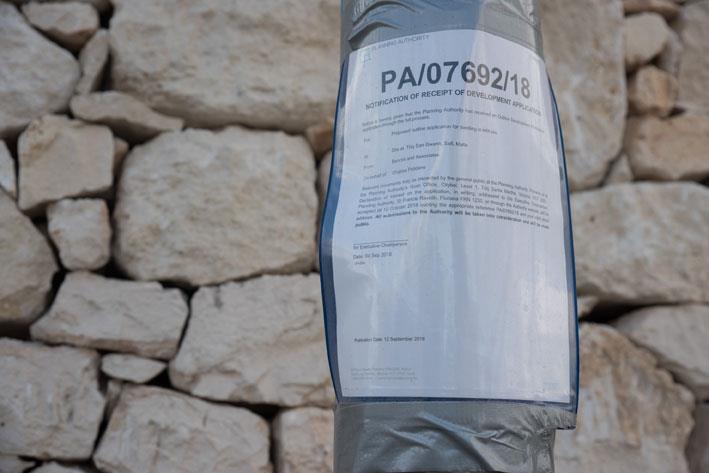An application has been filed to construct a house on ODZ land in Safi by Charles Polidano, and the Environment and Resources Authority (ERA) has already heavily criticised the proposal.
The plans submitted as part of the outline planning application show that the site will include a pool, an indoor pool, a citrus tree orchard, landscaping and a house consisting of a basement, ground floor and first floor levels. The total site area according to the application is 3,329 square meters.
The relevant site is located outside the development zone of Safi, along ‘Triq San Gwann’ the ERA said. “The area falls just outside the limits to development and is committed by residential development on one side, by a supermarket directly adjacent to it while the surrounding area is characterized by agricultural fields. The South Malta Local Plan designates the site as an agricultural area,” the Environment and Resources Authority said in its comments linked to this application.
“ERA considers the current proposal objectionable from an environmental point and the fact that it is an infill site, this should not be used as a pretext to gain further development permissions and expanding the range of land uses in this particular agricultural area.”
The ERA noted that the submitted photos do not illustrate the existing situation within the site in question. “In fact, the architect has only submitted photos illustrating the boundary wall and the gate constructed on site without the approval of a permit.”

The ERA said that an enforcement notice issued on the site in 2018 by the Planning authority notes that the building of foundations of structures inside the site in question has commenced.
“It is clear that this proposal will commit undeveloped rural land located beyond the development zone boundary, to accommodate urban development, thereby resulting in significant encroachment onto this particular area.”
The ERA said that its consistent position in relation to such projects has been and consistently remains “that there is no valid justification for the further loss of undeveloped land outside the development zone boundary, along with the associated environmental impacts to accommodate such use. There is also significant concern regarding the cumulative environmental impact caused by the numerous ad hoc proposals for new modern residential dwelling being proposed on ODZ land, and in this particular case about the opening up of the remnant rural lands overlooking the site in question to development pressures.”
The Superintendence of Cultural Heritage has also submitted its comments. “This location is known for its high degree of archaeological sensitivity. Recorded archaeological discoveries in the area include tombs at Triq ix-Xarolla, Triq il-Kuċċard, Triq il-Fdalijiet Paleokristjani, Triq Safi and beneath Saint Benedict Secondary School, as well as vine trenches, structural remains and ancient quarry marks.”
The Superintendence recommends that any development on the site footprint must be subject an archaeological investigation.

The Superintendence believes that the application runs counter to a rural policy, “which states that the proposed building on Outside Development Zone land is limited to a previously existing ‘dwelling (even if the former use was not residential), provided the existing building to be converted has a minimum habitable area of 100m² (habitable area refers to the roofed internal space between walls), provided the site is already serviced by a road network that would adequately cater for the proposed residence’. The site footprint is shown as unoccupied on the 1968 survey sheet.”
They said that, should the Planning Authority consider this footprint for future development, the proposed development must not pose a threat to cultural heritage remains that may survive within the footprint of the proposed development. In order to investigate this risk the Superintendence made a number of requests, including that the site be subject to an archaeological evaluation.
“In the absence of the requested archaeological evaluation, this outline application cannot be adequately assessed and should therefore be refused.”
